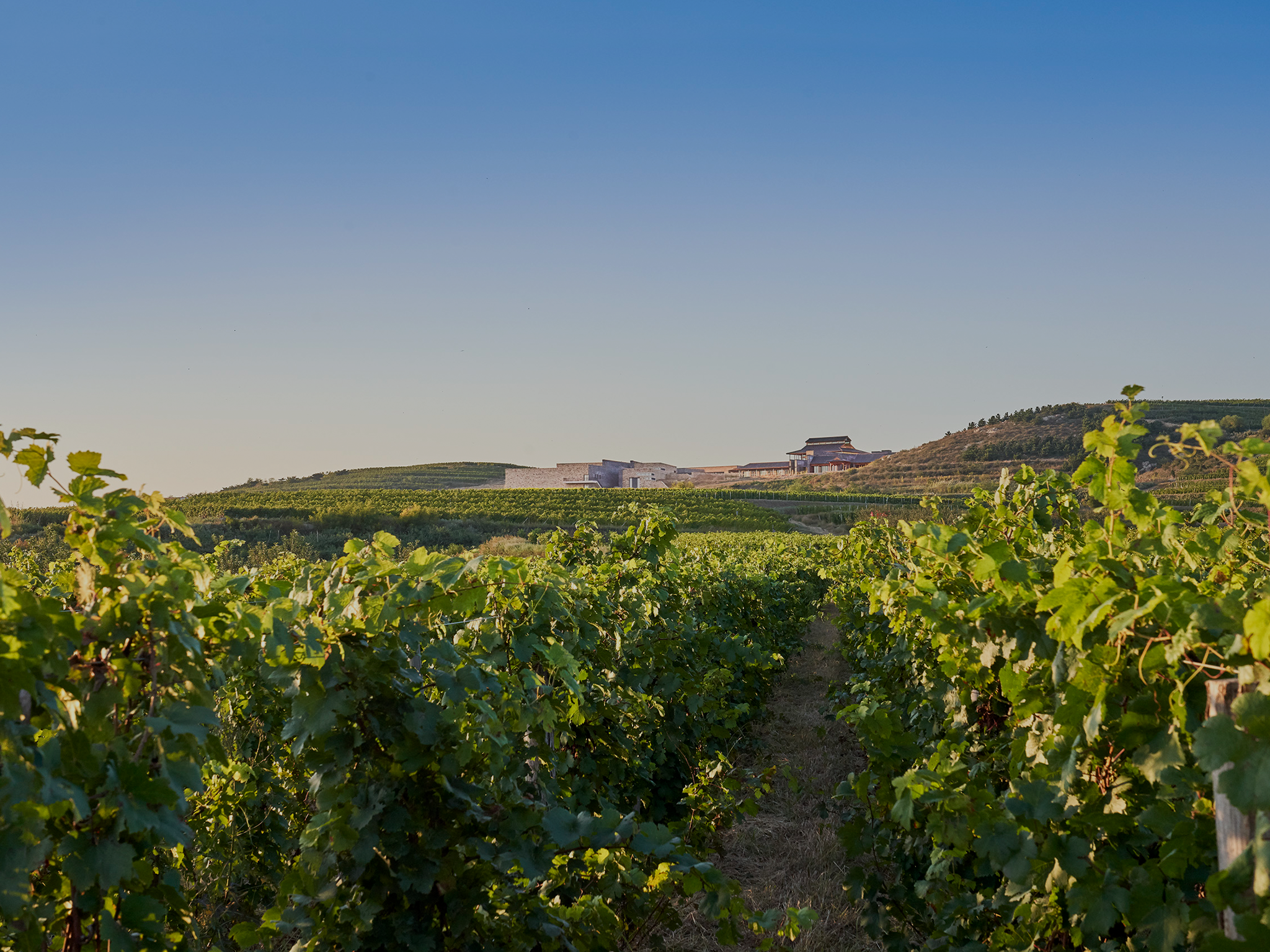Xiao Mu Lan

The vintage
Like 2020, 2021 was a relatively cool vintage. The season started with a wet spring and low temperatures which slowed the vines’ growth and resulted in an early threat of disease. However, at the beginning of June, a dry period ensured that flowering went smoothly and, from July onwards, a rise in temperatures restored the vines to a robust state of health and enabled them to catch up on their phenological development. However, they suffered slight water stress during August with a total of 29 mm of rain over 28 days. There were several rainy spells in September and October, leading the team to start the harvest fairly early. To ensure harvesting of the grapes at optimal ripeness, rigorous intra-plot zoning was carried out for each grape variety.
Location
Domaine de Long Dai nestles in the heart of the Qiu Shan Valley in Shandong province, north-east China. The climate in this region is tempered by the influence of the Yellow Sea, about 20 km away. Highly dependent on agriculture, this region benefits from both mild winters and granite soils, making it favourable for viticulture.
Terroir
The 34-ha vineyard is spread over 420 terraces, following the agricultural tradition in the region. This planting method respects both the landscape and the soil structure but also requires a lot of manual work as well as specially adapted machines. Everything has been organised to apply high-precision viticultural methods. Disbudding and green harvesting naturally reduce yields, allowing the grapes to reach full phenolic ripeness. Winter in this region is dry and cold, but less severe than in other parts of the country. Building up soil around the feet of the vines is generally sufficient to ensure frost protection. The summer is hot and includes a short period of rain in July and August, followed by two months of dry weather during the critical ripening period. The grapes do not ripen uniformly due to the terrace system, so the harvesting of each terrace is carried out in several passes to ensure that all grapes are picked at the optimum degree of ripeness.
Winemaking
This wine is made using the saignée method. After destemming and crushing, the juice and skins are macerated for a few hours. At the end of this maceration time, the juice is drained from the bottom of the tank to separate it from the solids. Then, after settling, fermentation is started at a temperature of between 16°C and 18°C. This method gives us wines of deeper colour, and with more structure and power.
Grapes
Tasting
Clear, bright colour with light salmon highlights. Intense, fruity nose, with aromas of melon, tropical fruit, white peach and Comice pear. On the palate, the wine is round and fresh, with a pleasant sweetness and good length.
Downloads

